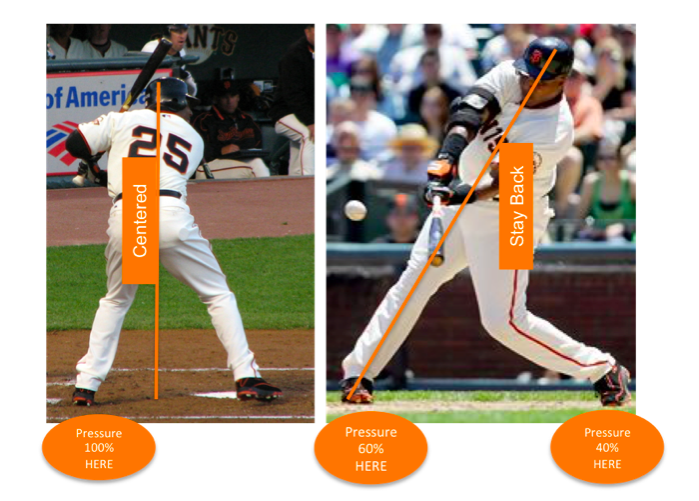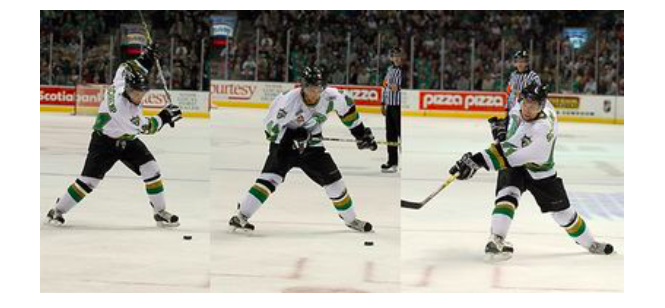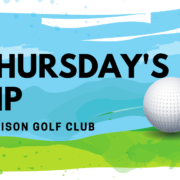Lurking beneath fat shots, worm burners, and occasional shanks, are skillsets and motions you can pull from the old memory bank to apply on the golf course. Yes, you heard us right; your high school letterman jacket can finally be put to good use and help you improve your move. You just need to understand some simple adjustments different sports athletes need to make to be successful golfers.
In golf, shifting from your trailside into your lead side is what we’ll call the TRANSITION. Old School teachers refer to this motion, or shift, as “Foot Work”, New-Fangled-Techno-Jargon-Packed-Instruction uses “Ground Pressure/Force” to refer to the same concept. Don’t worry about the nomenclature; just know, as many GolfWRXers already do, that you must get your weight to your lead side if you want any chance at making solid and consistent contact. TRANSITION might be THE toughest motion in golf to master.
The good news for you is that TRANSITION happens in all other sports but in slightly different ways, depending on the sport. Golfers can more quickly learn TRANSITION, and speed up their swing learning process by understanding how prior sport experience can be applied to the golf swing.
[The basics of a solid golf move are; 1) you should have a SETUP that is centered and balanced, 2) you move your weight/pressure into your trail side during the TAKEAWAY and BACKSWING, 3) TRANSITION moves your weight/pressure back into your lead side, and 4) you FINISH with the club smashing the ball down the fairway. Okay, it’s not quite as easy as I make it sound, but hopefully our discussion today can relieve some stress when it comes time for you to start training your game.]
Baseball/Softball Hitters
Hitting coaches don’t like their hitters playing golf during the season, that’s a fact. The TRANSITIONS are too different, and if they play too much golf, they can lose the ability to hit off-speed pitches because their swing can become too upright. Golf requires an orbital hand path (around an angled plane) with an upright-stacked finish, while hitting requires batters to have a straight-line (more horizontal) hand path and to “stay back or on top of” the ball.
Now we apologize for the lack of intricate knowledge and terminology around hitting a baseball, we only played up through high school. What we know for sure is that guys/gals who have played a lot of ball growing up, and who aren’t pitchers struggle with golf’s TRANSITION. Hitters tend to hang back and do a poor job of transferring weight properly. When they get the timing right, they can make contact, but consistency is a struggle with fat shots and scooping being the biggest issues that come to mind.
So how can you use your star baseball/softball hitting skills with some adjustments for golf? Load, Stride, Swing is what all-good hitters do, in that order. Hitters’ issues revolve around the Stride, when it comes to golf. They just don’t get into their lead sides fast enough. As a golfer, hitters can still take the same approach, with one big adjustment; move more pressure to your lead side during your stride, AND move it sooner. We’ve had plenty of ‘a ha’ moments when we put Hitters on balance boards or have them repeat step drills hundreds of times; “oh, that’s what I need to do”…BINGO…Pound Town, Baby!

Softball/Baseball Pitchers, Quarterbacks, & Kickers
There’s a reason that kickers, pitchers, and quarterbacks are constantly ranked as the top athlete golfers and it’s not because they have a ton of downtime between starts and play a lot of golf. Their ‘day jobs’ throwing/kicking motions have a much greater impact on how they approach sending a golf ball down the fairway. It’s apparent that each of these sports TRAINS and INGRAINS golf’s TRANSITION motion very well. They tend to load properly into their trailside while staying centered (TAKEAWAY/BACKSWING), and they transfer pressure into their lead side, thus creating effortless speed and power. Now there are nuances for how to make adjustments for golf, but the feeling of a pitching or kicking motion is a great training move for golf.
If this was your sport growing up, how can you improve your consistency? Work on staying centered and minimizing “happy feet” because golf is not a sport where you want to move too much or get past your lead side.
Dance
My wife was captain of her high school dance team, has practiced ballet since she was in junior high, and is our resident expert on Ground Pressure forces relating to dance. She has such a firm grasp on these forces that she is able to transfer her prior sports skill to play golf once or twice a year and still hit the ball past me and shoot in the low 100s; what can I say, she has a good coach. More importantly, she understands that staying centered and a proper TRANSITION, just like in Dance, are requirements that create stability, speed, and consistent motions for golf. Christo Garcia is a great example of a Ballerina turned scratch golfer who uses the movement of a plié (below left) to power his Hogan-esque golf move. There is no possible way Misty Copeland would be able to powerfully propel herself into the air without a proper TRANSITION (right).
Being centered is critical to consistently hitting the golf ball. So, in the same way that dancers stay centered and shift their weight/pressure to propel themselves through the air, they can stay on the ground and instead create a golf swing. Dancers tend to struggle with the timing of the hands and arms in the golf swing. We train them a little differently by training their timing just like a dance routine; 1 and 2 and 3 and…. Dancers learn small motions independently and stack each micro-movement on top of one another, with proper timing, to create a dance move (golf swing) more like musicians learn, but that article is for another time.
Hockey
Hockey is a great example of the golf TRANSITION because it mimics golf’s motions almost perfectly. Even a subtlety like the direction in which the feet apply pressure is the same in Hockey as in Golf, but that’s getting in the weeds a bit. Hockey players load up on their trailside, and then perform the TRANSITION well; they shift into their lead sides and then rotate into the puck with the puck getting in the way of the stick…this is the golf swing, just on skates and ice…my ankles hurt just writing that.
If you played hockey growing up, you have the skillsets for a proper golf TRANSITION, and you’ll improve much faster if you spend your time training a full FINISH which involves staying centered and balanced.
Now we didn’t get into nuances of each and every sport, but we tried to cover most popular athletic motions we thought you might have experience in in the following table. The key for your Big Shift, is using what you’ve already learned in other sports and understanding how you might need to change existing and known motions to adapt them to golf. If you played another sport, and are struggling, it doesn’t mean you need to give up golf because your motion is flawed…you just need to know how to train aspects of your golf move a little differently than someone who comes from a different sport might.














